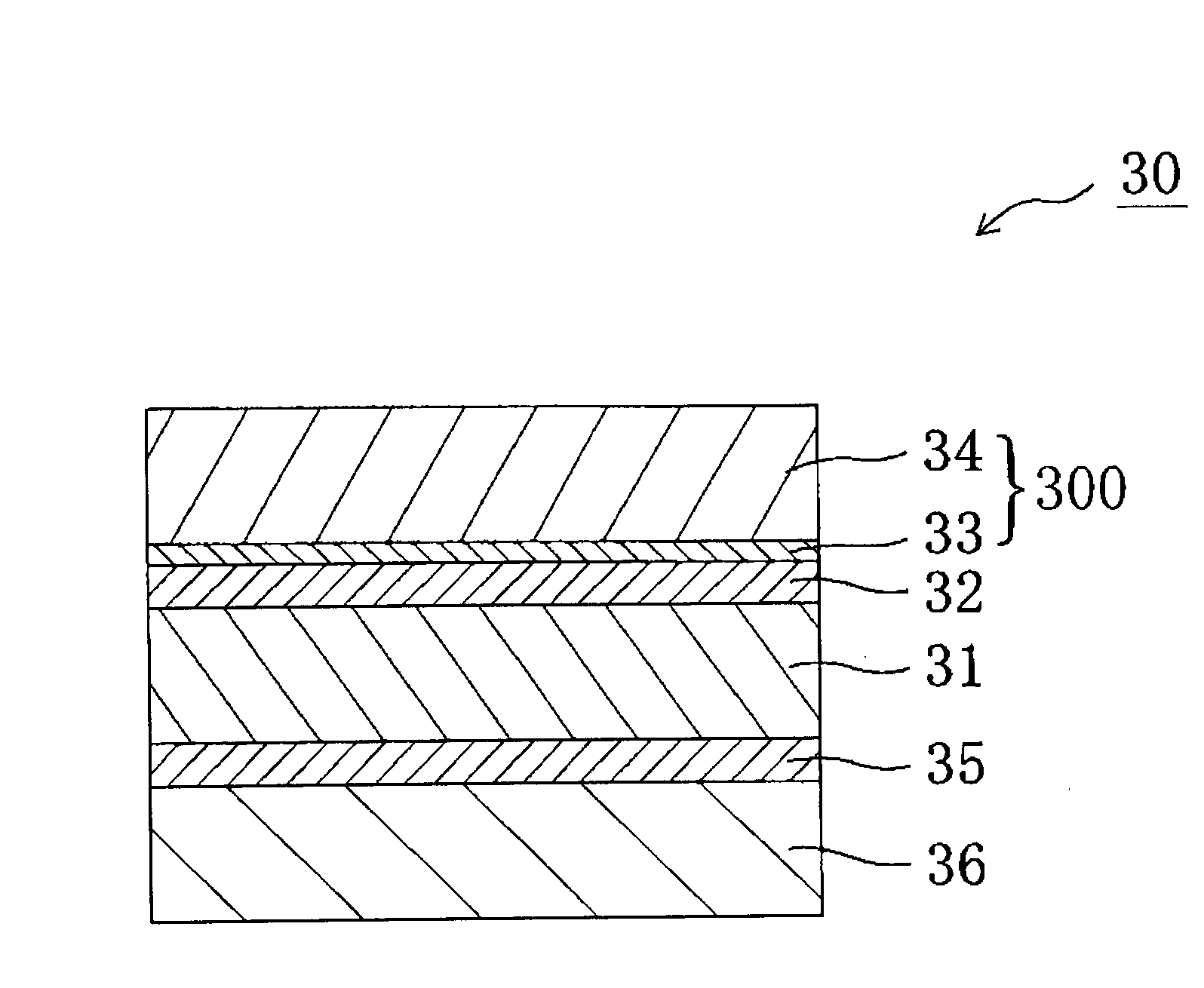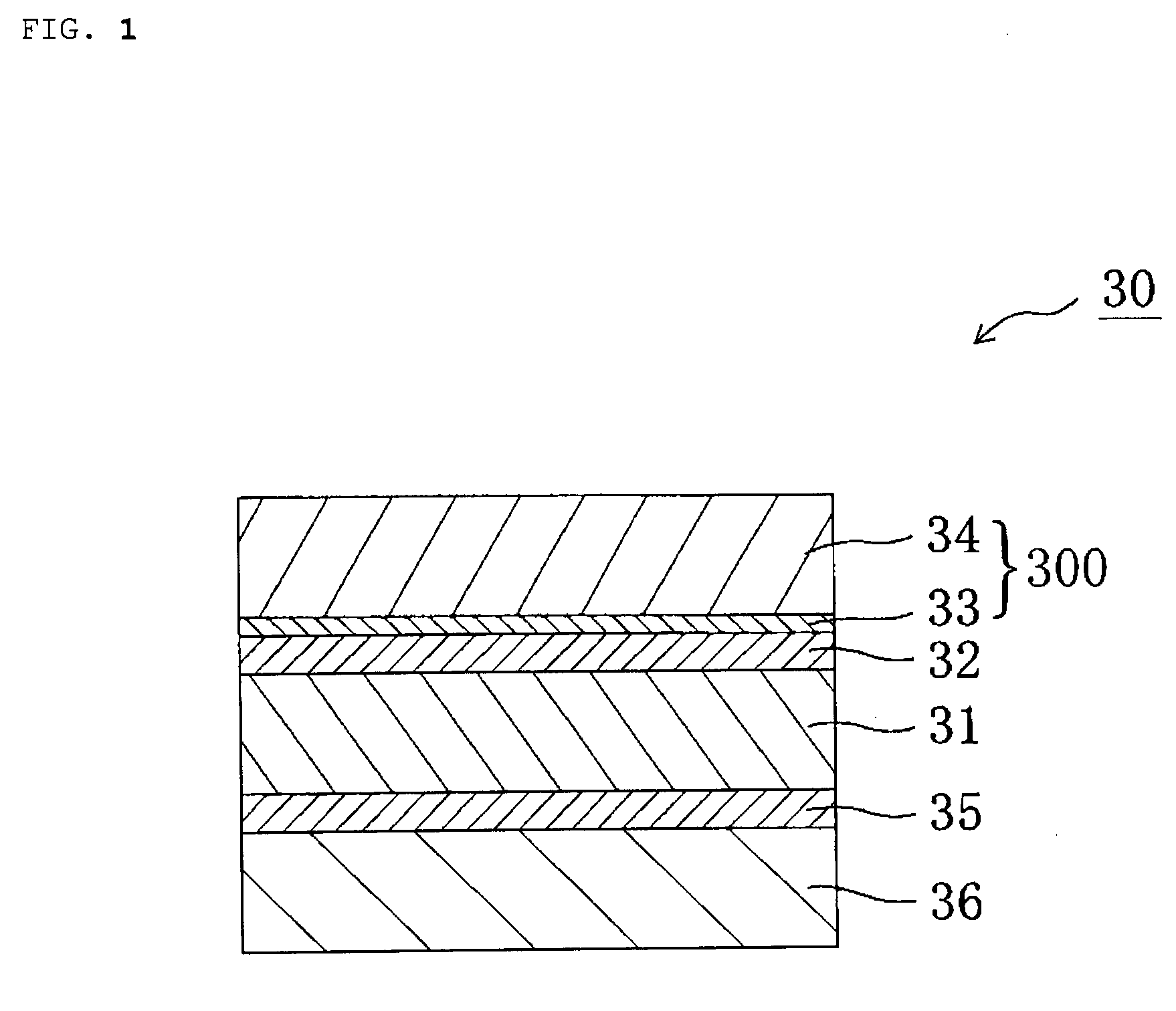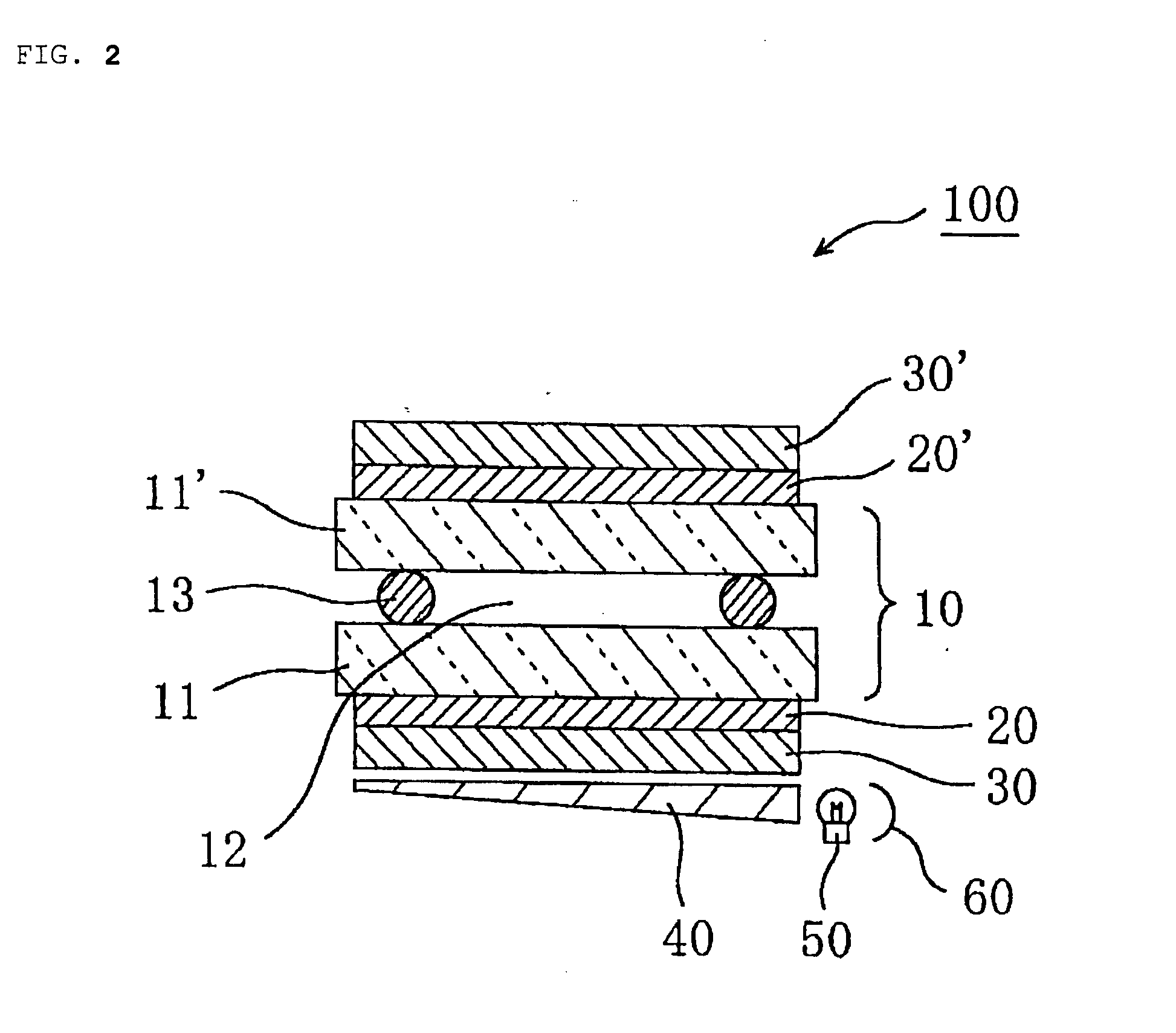Polarizer protective film, polarizing plate, and image display apparatus
a protective film and polarizing plate technology, applied in the field of polarizer protective film, polarizing plate, image display apparatus, can solve the problems of retardation with respect to incident light in an oblique direction, degraded polarization degree and polarizing plate hue, heat and humidity resistance, etc., to achieve high heat resistance, high transparency, and high optical characteristics
- Summary
- Abstract
- Description
- Claims
- Application Information
AI Technical Summary
Benefits of technology
Problems solved by technology
Method used
Image
Examples
production example 1
Production of Polarizer
[0200]A polyvinyl alcohol film with a thickness of 80 μm was dyed in a 5% by weight of an iodine aqueous solution (weight ratio: iodine / potassium iodide=1 / 10). Then, the resultant polyvinyl alcohol film was soaked in an aqueous solution containing 3% by weight of boric acid and 2% by weight of potassium iodide. Further, the polyvinyl alcohol film was stretched by 6.0 times in an aqueous solution containing 4% by weight of boric acid and 3% by weight of potassium iodide, and thereafter, the polyvinyl alcohol film was soaked in a 5% by weight of a potassium iodide aqueous solution. After that, the polyvinyl alcohol film was dried in an oven at 40° C. for 3 minutes to obtain a polarizer with a thickness of 30 μm.
production example 2
Production of a Lactone Ring-Containing Acrylic Resin
[0201]In a 30-L reaction vessel equipped with a stirring device, a temperature sensor, a cooling pipe, and a nitrogen introduction pipe, 8,000 g of methyl methacrylate (MMA), 2,000 g of methyl 2-(hydroxymethyl)acrylate (MHMA), and 10,000 g of toluene were placed, and the mixture was heated to 105° C. while nitrogen was being introduced thereto. After reflux, while 10.0 g of tert-amylperoxy isononanoate (Lupasol 570 (Trade name) manufactured by ATOFINA YOSHITOMI LTD.) was added as an initiator, and at the same time, a solution containing 20.0 g of the initiator and 100 g of toluene were dropped over 4 hours, the mixture was subjected to solution polymerization under reflux (about 105 to 110° C.), and further aged over 4 hours.
[0202]To the resultant polymer solution, 10 g of a stearyl phosphate / distearyl phosphate mixture (Phoslex A-18 (Trade name) manufactured by Sakai Chemical Industry Co., Ltd.) was added, and the polymer solutio...
production example 3
Production of a Lacton Ring-Containing Acrylic Resin Film
[0204]The lacton ring-containing acrylic resin pellet obtained in Production Example 2 was supplied to an extruder. After the pellet was melt-kneaded at 250° C., the pellet was extruded from a T-die and was cooled with water upon being taken up by a cooling roll, whereby a film with a thickness of 100 μm was obtained. After that, the film was stretched vertically by 1.8 times (heating temperature: 140° C.) and horizontally by 2.4 times (heating temperature: 140° C.) with a sequential biaxial extruder to obtain a lactone ring-containing acrylic resin film, which was a biaxially stretched film with a thickness of 30 μm.
PUM
| Property | Measurement | Unit |
|---|---|---|
| thickness | aaaaa | aaaaa |
| temperature | aaaaa | aaaaa |
| temperature | aaaaa | aaaaa |
Abstract
Description
Claims
Application Information
 Login to View More
Login to View More - R&D
- Intellectual Property
- Life Sciences
- Materials
- Tech Scout
- Unparalleled Data Quality
- Higher Quality Content
- 60% Fewer Hallucinations
Browse by: Latest US Patents, China's latest patents, Technical Efficacy Thesaurus, Application Domain, Technology Topic, Popular Technical Reports.
© 2025 PatSnap. All rights reserved.Legal|Privacy policy|Modern Slavery Act Transparency Statement|Sitemap|About US| Contact US: help@patsnap.com



